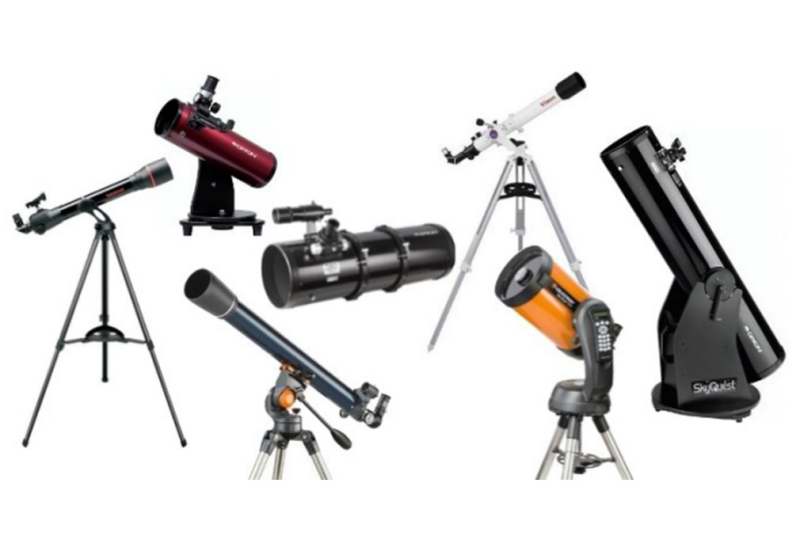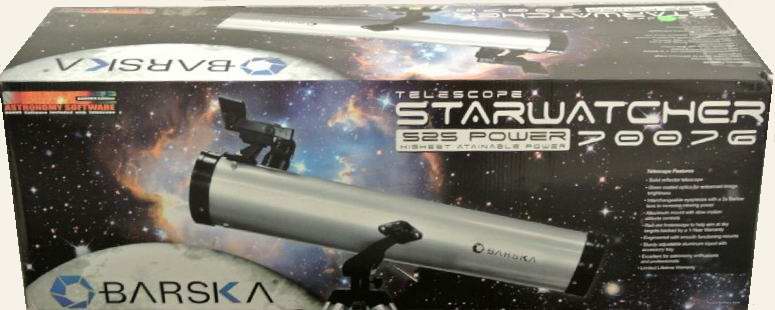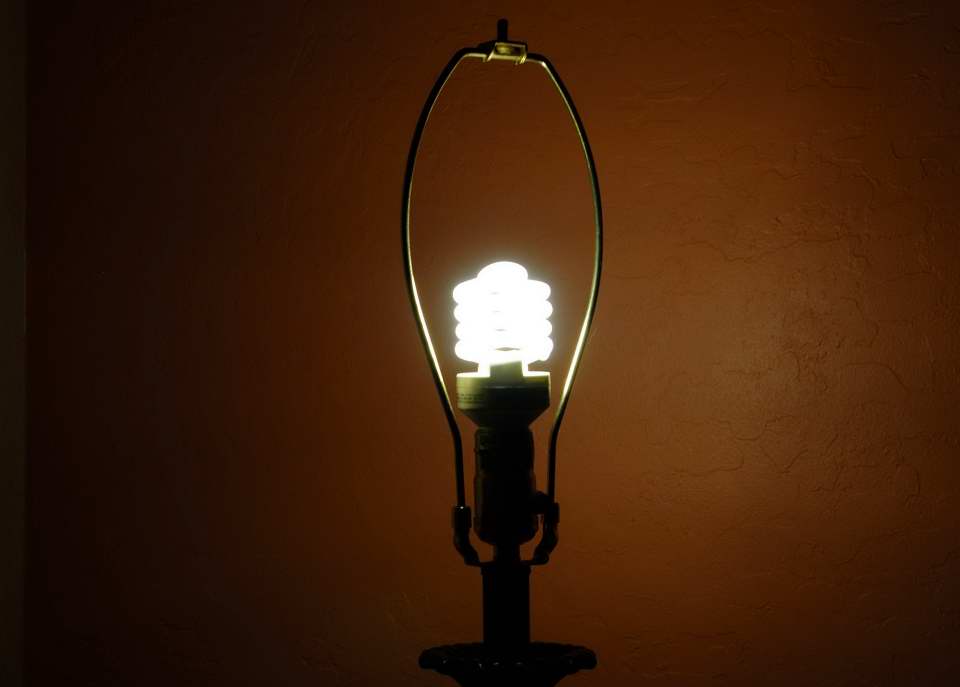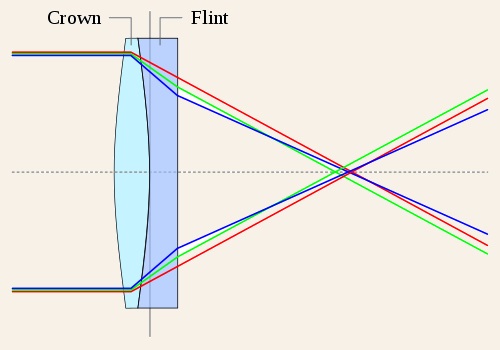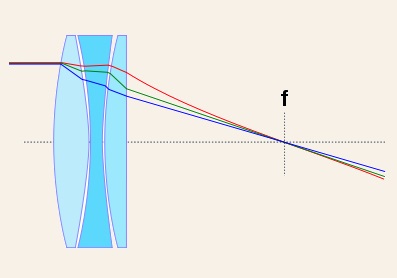Beginner's Guide
Telescopes
Looking to buy a telescope?
If you've come to this page the answer is more than likely yes. You might already even have a telescope and looking for more information, or even looking to buy another telescope. But we assume that most of the visitors of this page do not have a telescope and are looking for information so they can make an informed purchase.
Binoculars
You've possibly read that you should buy binoculars and use them before considering the purchase of a telescope. That is not our viewpoint. The simple reason is there's something magical about a telescope! It just feels good to have one and to use one, especially when you know how to properly operate one. But the other thing is many don't even need to make this choice because they often already have a pair. Granted, many of the small binoculars aren't really the best for astronomy, but any pair of binoculars beats none. But if you continue in astronomy you will want a decent pair and we'll discuss what you'll want later.
Scope of the Telescopes
In this discussion we will be targeting entry and mid-level telescopes used for visual use only. The rules and guidelines are more stringent (plus more expensive) for imaging. For a number of reasons, inexpensive beginner telescopes are not suited for serious deep sky imaging. However, you can attach a cellphone for pictures of the Moon, and maybe small images of Jupiter, Saturn, Mars, and Venus. During our Open House nights at our MAS Observatory many of our guests try doing this by putting their cellphone up to the eyepiece which is how the image to the left was captured.
Ownership Experience and "Looking Under the Hood"
Let's compare this to the consideration of buying a car. You shouldn't just consider how cool it looks, how many gadgets it has, mileage, or price. You also have to consider what happens after your purchase. We suggest a "holistic" approach, looking deeper. For a car, you would also consider:
- Fuel cost
- Maintenance record/costs
- Insurance cost
- Safety record & devices
- "Usefulness": Passengers and/or cargo
Telescope Myths
 Here are some common myths about telescopes.
Here are some common myths about telescopes.
- You need a telescope with high magnification.
- Telescopes are always long, thin & white.
- Any telescope will show all objects well.
- Celestial objects will look like Hubble images.
- If it looks cool, it will work well also.
- I want the biggest one possible - NOW!
- Telescopes see through clouds.
- I can see what the Apollo astronauts left on the Moon.
- Good telescopes must be expensive.
For more detailed discussion about telescope myths, we recommend:
High Point Scientifics 10 Common Telescope Myths.
Orion Telescopes Telescope Myths.
Telescope Realities
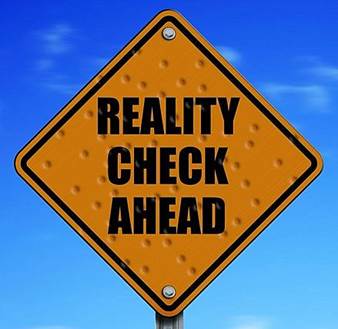
- If you can't lift it, it won't get used.
- You may have to find the objects yourself.
- Light pollution limits what and how well you can see objects. So you may need to find dark skies.
- Smallest/cheapest scopes only see the Moon well; planets & few very brightest objects poorly.
- It will be dark.
- It may be late.
- It may be cold.
- In the summer there may be mosquitoes!
Telescope Advice

- Don't buy one just because it seems in/expensive.
- Think about what you want to observe most.
- Don't buy one that is too big or heavy.
- Think about how you will store & transport it.
- If you don't know the constellations or time is short, get a computerized (GoTo / PushTo) scope.
- Be skeptical of hyperbole in advertising.
- They'll never tell you what they're not good for.
Telescope Advice For Members of the Milwaukee Astronomical Society
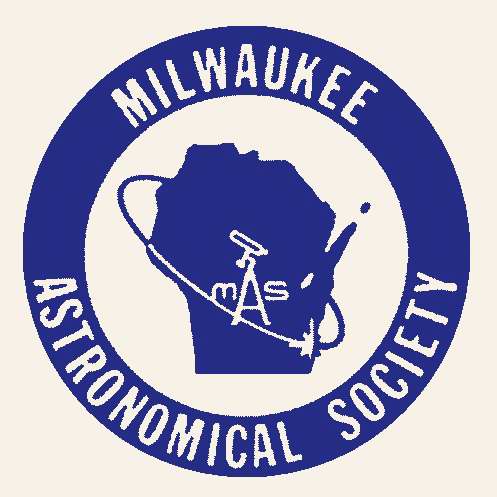 As a member of the Milwaukee Astronomical Society (MAS) we have special advice.
As a member of the Milwaukee Astronomical Society (MAS) we have special advice.
- If you are not sure (and even if you are), use one of our many MAS telescopes first.
- We also have many experts on astronomy and telescopes with decades of experience who are happy to lend both advice and assistance
- Save hundreds (thousands?) by not buying the "wrong" * telescope prematurely.
- Find out if you really like the hobby first.
- If it's your first scope, consider getting a small (4-6") scope now and a larger one later. This can then be a portable "travelscope".
Toy Telescope Warning!
 There is often a high price to be paid for something that is low cost. Here are some red flags that indicate you
should not take a telescope seriously.
There is often a high price to be paid for something that is low cost. Here are some red flags that indicate you
should not take a telescope seriously.
- Costs less than $200 or so.
- Crows about how much "power" it has (>300x)
- Shows Hubble pictures of objects on box
- Has fuzzy optics, shaky mount & blurry, soda straw eyepieces
- Sold in toy, dept store or Menards
- Typically a 60mm refractor or 3" reflector
- See only Moon, moons of Jupiter & rings of Saturn poorly assuming you can find them & keep them in view in the scope.
- What did you expect for a toy?
Making an Informed Decision / Telescope Basics
 In
order to make a good decision on what telescope you may want to consider,
you need to understand some telescope basics. The first is how a telescope
works. You will often see diagrams like the one at the right, but we find it is not
explained very well if at all. A good way to explain the diagram is to use
a magnifying glass as a telescope objective lens.
In
order to make a good decision on what telescope you may want to consider,
you need to understand some telescope basics. The first is how a telescope
works. You will often see diagrams like the one at the right, but we find it is not
explained very well if at all. A good way to explain the diagram is to use
a magnifying glass as a telescope objective lens.
- Different eyepieces can provide different magnifications. The exact magnification you get will be explained later on in the section on Eyepieces.
- The field of view (FOV) is determined by the eyepiece. This is a combination of both magnification (higher power means a smaller part of the sky) and the apparent FOV (the size of the circle you see.
- The objective does still play a part in the magnification.

The diagrams above show two lenses with the same diameter, but different focal lengths. The focal length is the distance from the lens to the focus plane. The left shows one with a longer focal length than the one on the right. So what difference does that make? The image formed by the longer one will produce a larger image, whereas the other produces a smaller image. The beginner may think that obviously you want larger, but many times you want a wider view of the sky. - The image projected is upside down. To make an image right side up requires the use of either additional lenses or prisms which are more commonly used. The downside is the additional glass results in loss of light. Not a big problem for terrestrial viewing, but it is for astronomical viewing when you want as much light as possible. Also, there is no such thing as right side up or upside down in space.
Telescope Terms
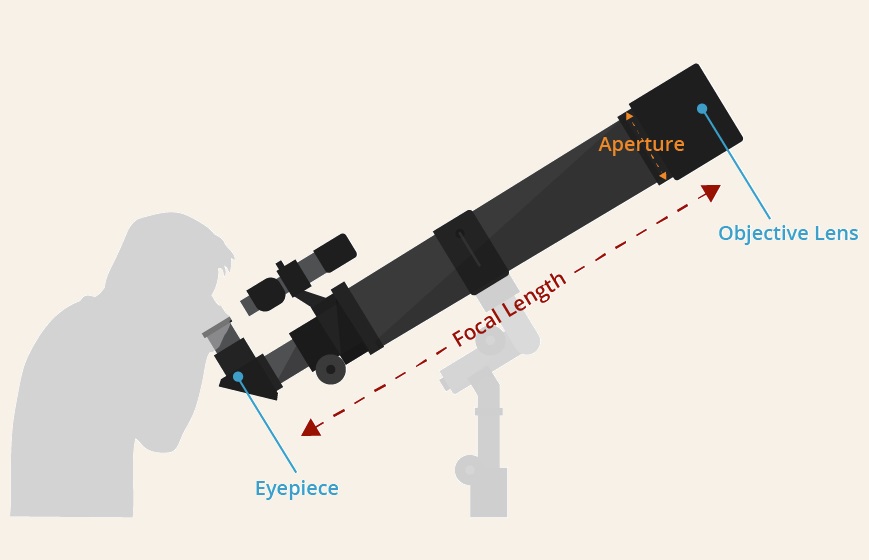 Now
that you've seen how a telescope basically works, it is necessary that you
have knowledge of some basic telescope terminology as these will be used in
the marketing info. Here we are showing a typical refractor telescope.
Now
that you've seen how a telescope basically works, it is necessary that you
have knowledge of some basic telescope terminology as these will be used in
the marketing info. Here we are showing a typical refractor telescope.
- Objective
- Light gathering lens or mirror
- Aperture
- Diameter of the objective
- Focal Length (fl)
- Distance from objective at which image forms
- f/ratio

- Ratio of focal length/aperture
- Proxy for focal length
- Useful mostly in astro imaging of nebulae
Eyepieces
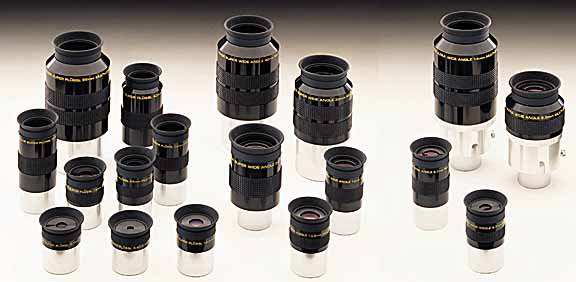 As you probably know, binoculars are simply a pair of small telescopes. But the major way they differ is binoculars don't have interchangeable eyepieces.
So when you're buying binoculars, you don't really worry about the eyepieces.
But when you're buying a telescope, you need to consider what eyepieces you need. That's because it's the eyepiece that will determine how much
magnification you get and also the field of view.
As you probably know, binoculars are simply a pair of small telescopes. But the major way they differ is binoculars don't have interchangeable eyepieces.
So when you're buying binoculars, you don't really worry about the eyepieces.
But when you're buying a telescope, you need to consider what eyepieces you need. That's because it's the eyepiece that will determine how much
magnification you get and also the field of view.
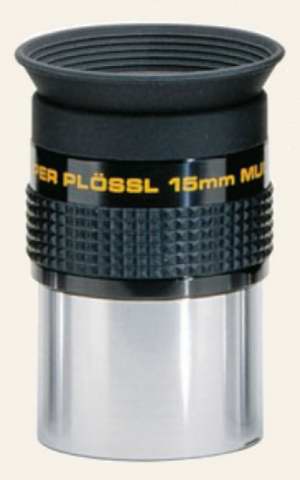 As we said earlier, it is the function
of the eyepiece to magnify the image that is formed from the objective lens of a telescope. How much will
any given eyepiece magnify? On every commercial eyepiece a number will be imprinted like the example on the left followed by the letters "mm" which
stand for millimeters. This is
the focal length of that eyepiece. Often, but not always the type of eyepiece will be shown. In the example it is
Plössl.
As we said earlier, it is the function
of the eyepiece to magnify the image that is formed from the objective lens of a telescope. How much will
any given eyepiece magnify? On every commercial eyepiece a number will be imprinted like the example on the left followed by the letters "mm" which
stand for millimeters. This is
the focal length of that eyepiece. Often, but not always the type of eyepiece will be shown. In the example it is
Plössl.
To calculate the magnification of any given eyepiece, you simply take the focal length of the telescope and divide it by the focal length of the eyepiece. So for a telescope with a 900mm focal length, that 15mm eyepiece will give a magnification of 60X.
900mm ÷ 15mm = 60
If you go and shop for eyepieces you will undoubtedly notice that there are many different types of eyepieces. We have a whole section dedicated to discussing eyepieces in more detail. What you need to know now is that eyepieces come in two barrel sizes: 1¼" and 2" diameter sizes. Almost all entry level telescopes will have a 1¼" eyepiece holder. This is because the larger 2" eyepieces are made to offer wider field views in larger telescopes. Achieving low power on an entry level telescope is easily achieved with the smaller eyepieces.
Refractors (Lenses)

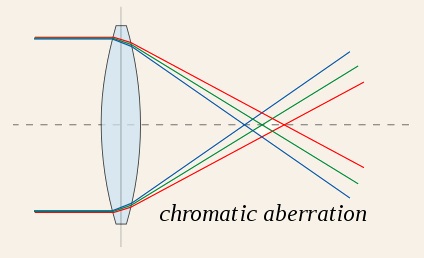 The objective lens of a refractor is made of glass. Though it may look like
a simple magnifying glass, it is always made of 2 or 3 lenses put together.
The problem with a single lens is shown by the diagram at the left. The lens
acts as a prism and therefore the light gets spread out just like a rainbow. So the problem
is the various frequencies of light focus at different points and thus will
blur the image.
The objective lens of a refractor is made of glass. Though it may look like
a simple magnifying glass, it is always made of 2 or 3 lenses put together.
The problem with a single lens is shown by the diagram at the left. The lens
acts as a prism and therefore the light gets spread out just like a rainbow. So the problem
is the various frequencies of light focus at different points and thus will
blur the image.
- Pros
- Good ones have very sharp images.
- Portable
- Cons
- Expensive per inch aperture.
- Achromatic ones can show color fringes.
- Dew is often a problem so the scope needs a dew shield (which is a tube extension at the front) or a dew heater.
- Types:
- Achromatic (2 elements; corrected 2 colors)
- ED apochromatic (2 elements; extra-low dispersion)
- Apochromatic (3 elements; corrected 3 colors)
Reflectors (Mirrors)
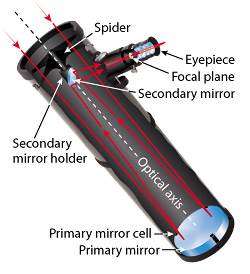 The objective lens of a reflector is a mirror.
The objective lens of a reflector is a mirror.
- Pros
- Generally provide the best performance (aperture) to price ratio
- Can provide wide fields of view for seeing deep space objects
- Do not suffer from chromatic aberration.
- Cons
- Can be big, heavy, and hard to store
- Mirror collimation needed periodically
- Mirror cleaning needed, although only rarely
- Generally the hardest to use for beginners
- Can't see space vampires.
- Types:
- Newtonian
- Dobsonian (Newtonian on an alt/az mount)
Catadioptrics (Mirror & Lens)
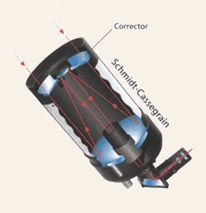 The objective lens of a
catadiotric
telescope is a mirror. But it differs from a
normal reflector in that it also has a corrector plate which the light
passes through before it hits the mirror.
The objective lens of a
catadiotric
telescope is a mirror. But it differs from a
normal reflector in that it also has a corrector plate which the light
passes through before it hits the mirror.
- Pros
- Very compact for aperture & focal length
- Sealed tube means mirror never needs cleaning
- Cons
- Can be expensive, but less than refractors
- Most have large central obstructions
- Dew is often a problem so the scope needs a dew shield (which is a tube extension at the front) or a dew heater.
- Types:
- Schmidt-Cassegrain (SCT)
- Maksutov-Cassegrain (Mak-Cass)
- Maksutov-Newtonian (Mak-Newt)
- Schmidt-Newtonian (SNT)

